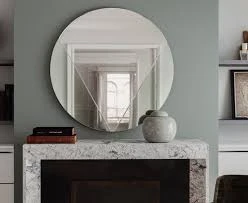

The Elegance and Functionality of White Reflective Glass
In the world of modern architecture and design, materials play a pivotal role in shaping aesthetics and functionality. Among these materials, white reflective glass has emerged as a popular choice, marrying elegance with innovation. This article explores the many benefits and uses of white reflective glass, highlighting its significance in contemporary design.
Aesthetic Appeal
One of the most striking features of white reflective glass is its aesthetic appeal. The reflective quality adds a unique brilliance to buildings, allowing light to interact in captivating ways. This glass can create a bright and airy space, making interiors feel larger and more inviting. It reflects the surrounding environment, seamlessly blending with nature and urban landscapes alike. The subtle white hue complements various architectural styles, from minimalist designs to opulent structures, making it a versatile choice for architects and designers.
Energy Efficiency
Beyond its beauty, white reflective glass is celebrated for its energy-efficient properties. The reflective surface reduces heat absorption, consequently lowering the need for artificial cooling systems. In warmer climates, buildings constructed with this material can maintain a comfortable internal temperature, significantly decreasing energy consumption. This not only benefits the environment by reducing carbon footprints but also translates to cost savings for building owners over time. The use of white reflective glass thus aligns with the increasing demand for sustainable and eco-friendly building practices.
Light Management

Effective light management is a critical consideration in architectural design. White reflective glass excels in this area, allowing for natural light penetration while minimizing glare. It diffuses sunlight, creating well-lit spaces without the harshness that can lead to eye strain and discomfort. This characteristic is particularly advantageous in office buildings and commercial spaces, where employee well-being and productivity are paramount. By harnessing natural light effectively, designers can create healthier and more pleasant indoor environments.
Versatile Applications
White reflective glass is versatile, making it suitable for a wide range of applications. In residential settings, it can be used for windows, sliding doors, and glass railings, enhancing both aesthetics and functionality. In commercial architecture, it’s frequently employed in storefronts and facades, attracting customers with its modern and sophisticated look. Additionally, the glass is often used in high-rise buildings, where its reflective properties help in minimizing the visual impact of towering structures in the skyline.
Safety and Durability
Safety is another key advantage of white reflective glass. Modern manufacturing techniques ensure that this kind of glass can withstand environmental stressors, making it durable and long-lasting. Its resistance to shattering enhances safety for occupants and passersby, particularly in busy urban environments. Furthermore, advancements in technology allow for the incorporation of smart glass features, such as self-tinting options that adjust based on sunlight exposure, further enhancing safety and comfort.
Conclusion
In conclusion, white reflective glass stands out as a remarkable material that embodies elegance, functionality, and sustainability in modern architecture. Its aesthetic appeal transforms spaces while contributing positively to energy efficiency and light management. Versatile and durable, it meets the diverse needs of both residential and commercial projects. As architects and designers continue to seek innovative materials that enhance beauty and functionality, white reflective glass will undoubtedly remain a prominent choice well into the future. The continued exploration and application of this material will redefine our architectural landscapes, creating environments that are not only visually stunning but also thoughtful in their resource use.